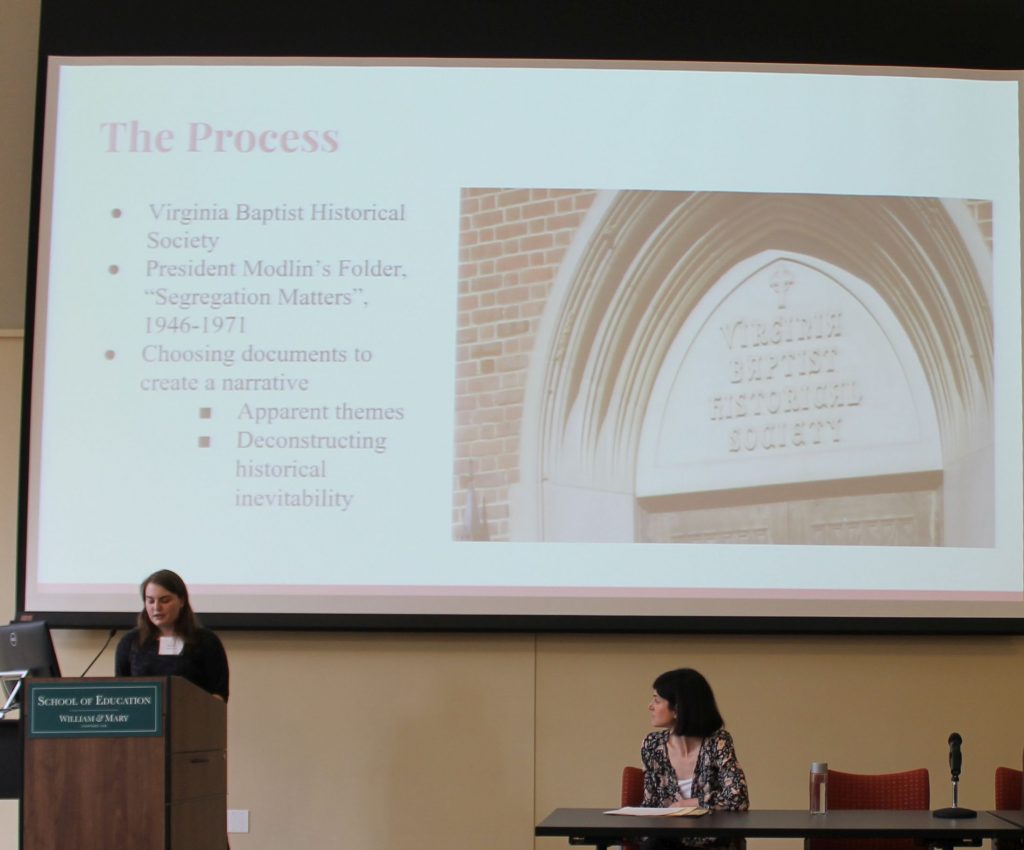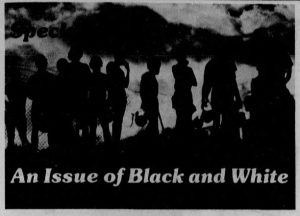 On March 16, 2018, five undergraduate students who have worked with the Race & Racism at the University of Richmond Project had the opportunity to present at the Lemon Project Symposium at the College of William and Mary. The panel, entitled “Seeing the Unseen and Telling the Untold: Institutions, Individuals, and Desegregating the University of Richmond,” was moderated by Dr. Nicole Maurantonio and featured Dominique Harrington, Madeleine Jordan-Lord, Elizabeth Mejía-Ricart, Jennifer Munnings, & Destiny Riley. Below you will find the text and slide images of Madeleine Jordan-Lord’s presentation, focusing on the research she conducted while taking “Digital Memory & the Archive in the fall of 2016.” Click here to explore the exhibit she and her teammates created, “George Modlin’s Segregated University of Richmond.”
On March 16, 2018, five undergraduate students who have worked with the Race & Racism at the University of Richmond Project had the opportunity to present at the Lemon Project Symposium at the College of William and Mary. The panel, entitled “Seeing the Unseen and Telling the Untold: Institutions, Individuals, and Desegregating the University of Richmond,” was moderated by Dr. Nicole Maurantonio and featured Dominique Harrington, Madeleine Jordan-Lord, Elizabeth Mejía-Ricart, Jennifer Munnings, & Destiny Riley. Below you will find the text and slide images of Madeleine Jordan-Lord’s presentation, focusing on the research she conducted while taking “Digital Memory & the Archive in the fall of 2016.” Click here to explore the exhibit she and her teammates created, “George Modlin’s Segregated University of Richmond.”
Madeleine Jordan-Lord is a 2018 gradaute who majored in American Studies and History at the University of Richmond. She has worked on digital history projects, including the Race & Racism at the University of Richmond Project, as well as the Abbitt Papers special collection at Boatwright Memorial Library. Over the course of her time at UR, Madeleine has held internships at several non-profits–Art180, Virginia Historical Society, and Tricycle Gardens–creating public curriculum and education-based workshops.



 The Collegian article titled “
The Collegian article titled “


